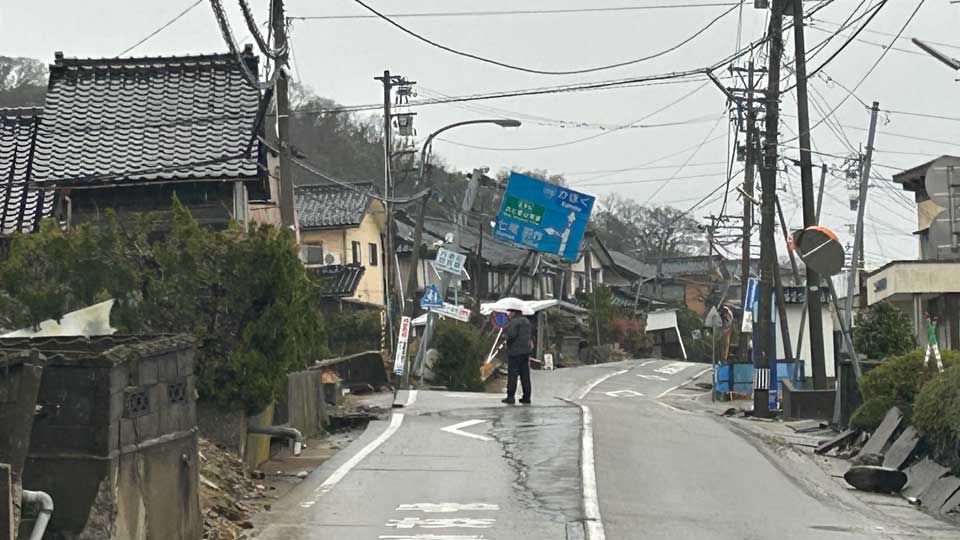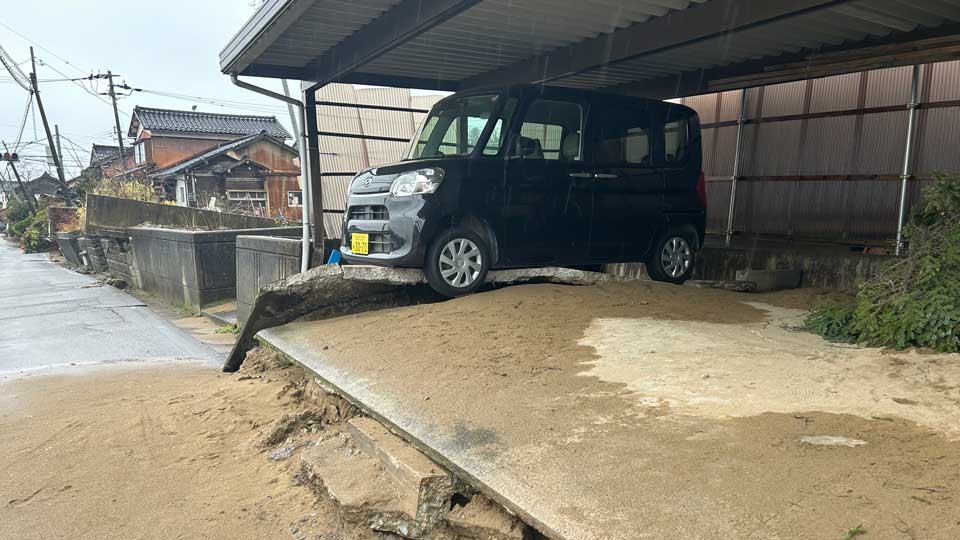Expert Yasuda Susumu says that damage caused by liquefaction may have occurred over wide areas, the extent of which will need to be determined.

Yasuda, a professor emeritus at Tokyo Denki University who specializes in geotechnical engineering, on Saturday began a survey on the damage caused by the earthquake in Ishikawa Prefecture.
According to the survey, liquefaction took place in the Miyasaka area of Uchinada Town, causing buildings to sink into the ground. Several cracks in the ground were confirmed nearby, and the ground moved two to three meters horizontally.

In the Nishiaraya area, a gentle slope that used to be a sand dune rose more than one meter, creating a large gap. There are many sand dunes along the coast of the Sea of Japan, and liquefaction was observed in the 1983 earthquake that hit the central part of the Sea of Japan.

Yasuda points out that ground deformation this time is particularly large compared to past earthquakes on the Sea of Japan coast.
He added that Uchinada Town is a place where liquefaction is likely to occur, since the area consists of sand dunes on a gentle slope. But he was surprised at the scale of gaps of more than one meter.
He added that judging from the scale of the earthquake, liquefaction is believed to have occurred across a wide area, including in Niigata Prefecture.
NHK World crew's on-site report
An NHK World crew in the field says many people from Uchinada commute to the prefectural capital of Kanazawa, about 30 minutes away by car.
The town developed as a Kanazawa bedroom community.
The crew, which saw tilted road signs and electrical poles leaning over the road, said everything in the area looks distorted.
Roads and sidewalks ripped up, large slabs of concrete lifted and pushed together like the folds of an accordion, entire homes shifted. In some places streets have been raised upward by more than a meter, making them virtually impossible to drive or walk on.
The crew talked to several residents.
Tanaka Yoshiko said she felt a little tremor at first, and then the next one was very strong. She said, "I opened the door and found the street was already separated from the gutter." She showed the road which had collapsed near her home.

Higashi Tomiko, an old friend of Tanaka's, also lives in Uchinada. She spoke about their fear.
"I don't know when it will collapse. I can't live here anymore," she says of her damaged house.

The crew said the geology of the town is the cause of the severe damage it suffered, even though it is relatively far from the epicenter of the quake.
Uchinada is located in the southern part of Ishikawa, alongside the Sea of Japan, with the sea just a few hundred meters away from residential areas. The town is also built on a sand dune.
Dunes, which are hills of sand formed by wind near a large body of water, are a type of relatively loose, wet soil prone to liquefaction.
Watch NHK World's on-site report here:
